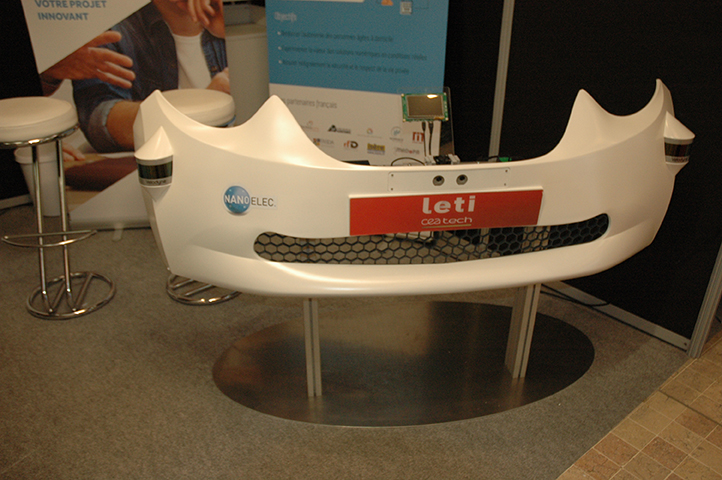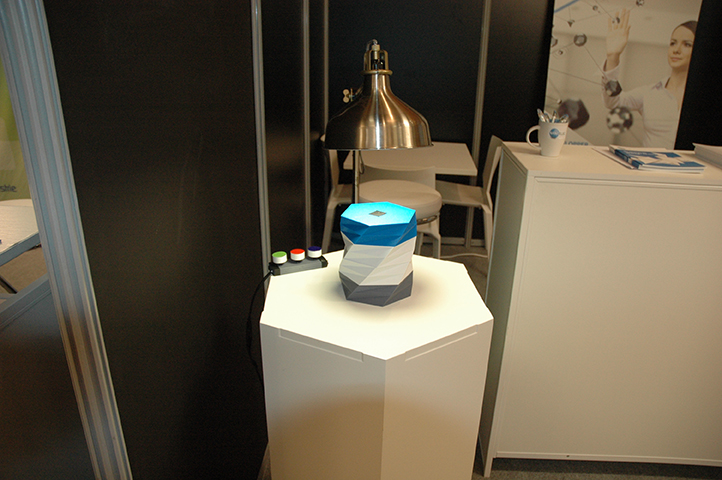The SIdO Internet of Things trade show was held in Lyon on April 5 and 6, 2017.
For the first time ever, IRT Nanoelec exhibited at its own booth at this event, showcasing two demonstrators, Sigma Fusion and VLC.
The SIdO Internet of Things trade show brought in more than 6,500 visitors this year. It has become the region’s own little Consumer Electronics Show, providing a unique opportunity for businesses to build their networks and plant the seeds for future business partnerships. The event was created to bring France’s, and more broadly, Europe’s, IoT community together to help businesses stay one step ahead of tomorrow’s IoT uses and make the IoT an economic reality. The entire IoT value chain is represented at the event, from design and manufacturing to data storage and management.
A number of industrial and retail companies (Schneider Electric, STMicroelectronics, Boulanger, and Amazon, to name a few) were there, giving the startups in attendance a chance to generate leads crucial to their future growth.
IRT Nanoelec’s booth showcased two demonstrators:
The Sigma Fusion demonstrator, made up of heterogeneous sensors that can interpret the signals from one camera and two Lidar laser sensors. The system leverages data fusion algorithms and obstacle detection models to provide an autonomous driverless car system with accurate, reliable data on obstacle position and the buffer zone around the vehicle in real time. It is small, affordable, and energy efficient, consuming less than 1 watt (100 times less than the systems currently available).

The VLC (Visible Light Communication) demonstrator was developed jointly by Schneider Electric and IRT Nanoelec. The technology uses LED lamps’ capacity to switch on and off very quickly to transmit data. And, with the off position transmitting a 0 and the on position transmitting a 1, the technology is compatible with standard digital communications protocols. The system can transmit data at several MHz or, in some cases, GHz.
At SIdO, we used a LED lamp to transmit a dataset at several KHz. The three signals (Red, Green, Blue) sent by the LED lamp can be adjusted via a control panel. A 3D-printed hexagonal unit receives the signal from the LED via a light sensor. A STM32 microcontroller by STMicroelectronics then interprets the signal. Finally, the colors are transmitted to a LED ribbon that flashes in the color entered into the control panel.

The IRT Nanoelec Easytech program was also at the event, exhibiting at the Minalogic booth (Minalogic administers the program). Easytech, which was set up to make IRT Nanoelec technologies accessible to small and mid-sized businesses, took advantage of SIdO to reach out to businesses seeking technological solutions and to meet with project leads. In all, Easytech brought home more than 50 new contacts!




